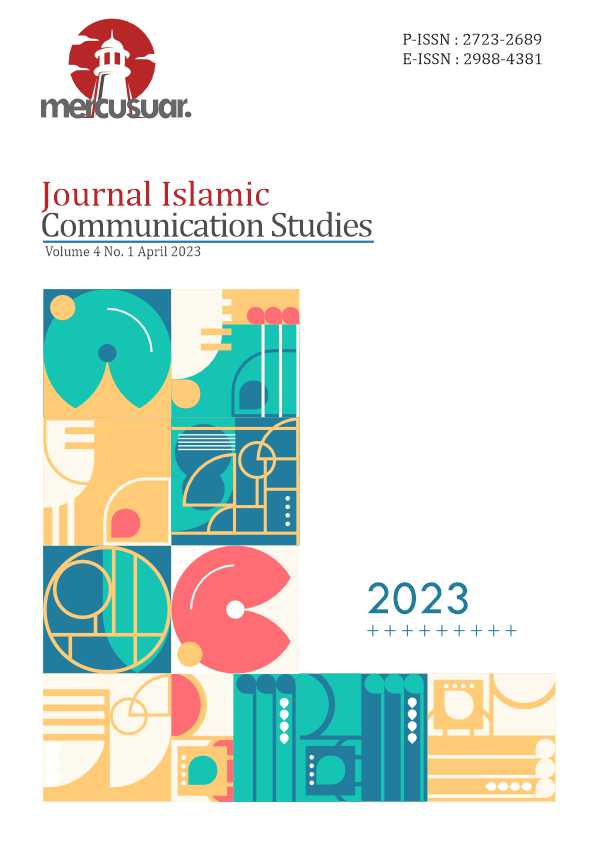Praktik Komunikasi Mediasi terhadap Penyelesaian Perkara Perceraian di Pengadilan Agama Kelas 1A Makassar
Abstrak
Penelitian ini bertujuan untuk mendeskripsikan dan menganalis praktik komunikasi pada proses mediasi penyelesaian perkara perceraian di Pengadilan Agama Kelas 1A Makassar.
Penelitian ini menggunakan jenis kualitatif deskriptif sedangkan pendekatan penelitian yang digunakan yaitu studi kasus (case study) yang berlokasi di Pengadilan Agama Kelas 1A Makassar. Sumber data dalam penelitian yaitu dua orang hakim mediator serta sepuluh orang pihak berperkara. Metode pengumpulan data yang digunakan dalam penelitian ini adalah observasi, wawancara, dan dokumentasi. Instrumen penelitian dalam penelitian ini yaitu peneliti sendiri. Kemudian teknik pengolahan dan analisis data dilakukan dengan tiga tahapan yaitu reduksi data, penyajian data, dan penarikan kesimpulan.
Hasil penelitian ini menunjukkan bahwa praktik komunikasi dalam proses mediasi di Pengadilan Agama Kelas 1A Makassar menggunakan komunikasi interpersonal yang ditunjukkan dengan komunikasi verbal melaui keterbukaan, empati dan rendah hati dan nonverbal disertai dengan sikap tubuh, mimik, dan intonasi suara, terjalin komunikasi dua arah antara mediator dengan pihak berperkara, suasana keakraban dan informal, serta materi pembicaraan yang bersifat privasi. Selain itu, penerapan komunikasi interpersonal pada proses mediasi di Pengadilan Agama kelas 1A Makassar juga menggunakan pendekatan psikologis, pendekatan sosiologis dan pendekatan ukhrawi.
Penelitian ini berimplikasi pada praktik komunikasi interpersonal yang efektif dapat mempengaruhi dan mengubah persepsi positif pihak berperkara pada proses mediasi di Pengadilan Agama Kelas 1A Makassar.
##plugins.generic.usageStats.downloads##
Referensi
Zainal Abidin, Himpunan Peraturan Perundang-undangan Dalam Lingkungan Peradilan Agama, (Cet. I; Jakarta: Karya Global, 2001).
Abdul Rahman Ghozali, Fiqih Munakahat, (Cet. I; Jakarta: Prenada Media, 2003).
Hadi Daeng Mappunna, Hukum acara Pengadilan Agama, (Makassar: Alauddin University Press, 2013).
Muh Budyatna dan Leila Mona Ganiem, Teori Komunikasi Antarpribadi.


